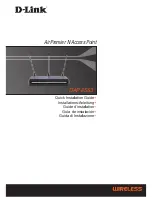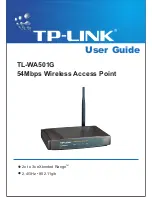
Coaxial Cable Connections
MA 850A1A1 Installation and Configuration Guide
10
2.2 Coaxial
Cable
Connections
2.2.1
General Cable Installation Procedures
The general cable installation procedures in accordance with the building codes in your area
should be observed. The building code requires that all cabling be installed above ceiling level
(where applicable). Each length of cable from the risers to each antenna must be concealed
above ceiling.
The cable must be properly supported and maintained straight. This is done either by using tie
wraps or cable trays and clamps or hangers every 10 feet (where practical above ceiling level).
Where this is not obtainable, the following should be observed:
•
The minimum bending radius of the supplied ½” coax cable should be 7”.
•
Cable that is kinked or has a bending radius smaller than 7” must be replaced.
•
Cable runs that span less than two floors should be secured to mechanical structures
that are suitably located.
•
The cables should be supported only from the building structure.
2.2.2 RF
Rules
•
Use coax ½”, 50ohm, male-to-male N-type, (6-7dB for 1Ghz, 11dB for 2Ghz) for
connecting to RHU and RHU ports.
•
Use coax RG223, 50ohm, male-to-male N-type for RF connections from the BUs to the
BTS/RBS and to the RIU.
•
When using the MobileAccess™ system in an environment in which other indoor
coverage systems are installed, it is recommended (where possible) that the antennas
are placed at least two meters apart
•
When bending coax cables, verify that the bending radius does not exceed the coax
specifications.
•
Use only antennas listed in section
•
Use a VSWR meter (i.e. Site Master or equivalent) for checking coax cables, including
the antennas. (<2). The VSWR must be measured prior to terminating the RHUs in the
remote communication rooms
•
Terminate all unused
MA 850A1
ports with a 50 ohm load
















































